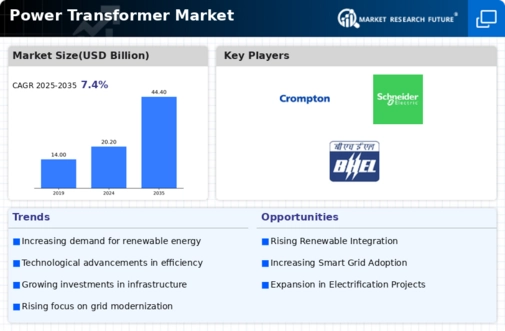Market Share
Power Transformer Market Share Analysis
The current landscape of electricity generation is undergoing a significant transition, marked by a shift towards renewable energy sources. Renewable energy is becoming an integral part of the energy mix, complementing the electricity generated from traditional thermal sources. Among the various renewable sources, solar and wind energy stand out as the most rapidly growing investment sectors. This surge in interest is fueled by notable technological advancements that contribute to enhancing the efficiency of harnessing energy from these sources.
According to a report from the UNEP-FS collaborating center, the year 2017 witnessed a substantial commissioning of 157 gigawatts (GW) of renewable power. Notably, solar energy emerged as the frontrunner, accounting for a staggering 98 GW, which translates to 38% of the net added power capacity in the same year. The prominence of solar energy in this context underscores its pivotal role in the global push towards renewable energy adoption. The integration of such significant additions from renewable sources into the electricity grid necessitates corresponding enhancements in the infrastructure of transmission and distribution networks. This evolution in the energy landscape also directly amplifies the demand for power transformers.
Power transformers play a crucial role in facilitating the connection between solar generation points and the broader electricity grid. As solar energy, in particular, takes center stage in the renewable energy portfolio, the need for a robust and efficient transmission and distribution network becomes paramount. Power transformers act as enablers in this process, ensuring the seamless flow of electricity generated from solar sources to the larger grid. The transformative impact of these developments extends beyond mere capacity additions; it signifies a broader paradigm shift towards sustainable and cleaner energy systems. In essence, the rise of renewable energy sources, especially solar and wind, signifies a paradigmatic shift in the global energy landscape.
The surge in renewable capacity, as highlighted by the UNEP-FS report, is a testament to the growing importance of sustainable energy solutions. The simultaneous growth in the deployment of solar energy and the demand for improved transmission and distribution infrastructure, facilitated by power transformers, underscores the interconnected nature of these advancements.







Leave a Comment